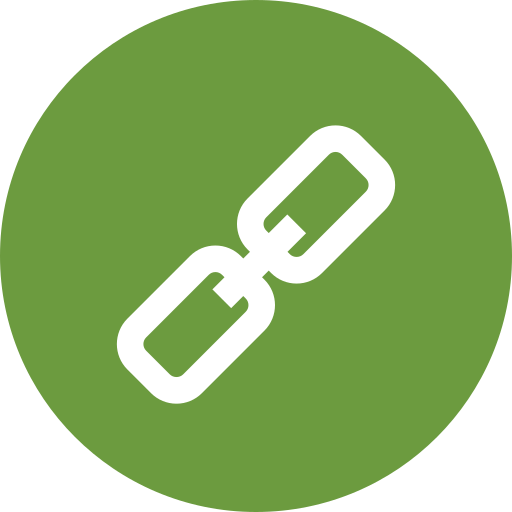| Product name | Per Pill | Savings | Per Pack | Order |
|---|---|---|---|---|
| 10 pills | $4.76 | $47.62 | ADD TO CART | |
| 30 pills | $3.55 | $36.36 | $142.85 $106.49 | ADD TO CART |
| 60 pills | $3.25 | $90.90 | $285.70 $194.80 | ADD TO CART |
| 120 pills | $3.10 | $199.99 | $571.40 $371.41 | ADD TO CART |
| Product name | Per Pill | Savings | Per Pack | Order |
|---|---|---|---|---|
| 10 pills | $3.94 | $39.40 | ADD TO CART | |
| 30 pills | $2.82 | $33.52 | $118.19 $84.67 | ADD TO CART |
| 60 pills | $2.54 | $83.81 | $236.39 $152.58 | ADD TO CART |
| 90 pills | $2.45 | $134.10 | $354.59 $220.49 | ADD TO CART |
| 120 pills | $2.40 | $184.38 | $472.78 $288.40 | ADD TO CART |
Sevelamer is a medication used to treat hyperphosphatemia, a condition characterized by elevated levels of phosphate in the blood. It is commonly prescribed to patients with chronic kidney disease (CKD) or those undergoing dialysis. In this article, we will delve into the world of Sevelamer, exploring its uses, benefits, and how to order Sevelamer or buy Sevelamer 400 mg on-line.
What is Sevelamer?
Sevelamer is a phosphate binder that works by binding to phosphate in the gastrointestinal tract, preventing its absorption into the bloodstream. This helps to reduce phosphate levels in the blood, which can become elevated in patients with CKD or those undergoing dialysis. Sevelamer is available in two strengths: Sevelamer 400 mg and Sevelamer 800 mg.
Benefits of Sevelamer
Sevelamer has several benefits, including:
- Reduces phosphate levels in the blood, which can help to prevent complications such as cardiovascular disease and bone disease
- Helps to slow the progression of CKD
- Can be used in conjunction with other medications to manage hyperphosphatemia
- Available in a variety of formulations, including tablets and powders
How to Buy Sevelamer
If you are looking to buy Sevelamer 400 mg on-line or order Sevelamer 800 mg buy fast delivery, there are several options available. You can purchase Sevelamer from online pharmacies, which often offer discount Sevelamer online American Express or other payment options. You can also purchase Sevelamer 400 mg Amex or buy Sevelamer 400 mg with Visa.
| Formulation | Strength | Price |
|---|---|---|
| Tablet | 400 mg | $10.99 |
| Tablet | 800 mg | $19.99 |
| Powder | 400 mg | $12.99 |
| Powder | 800 mg | $24.99 |
Generic Sevelamer
Generic Sevelamer is also available, which can be a more affordable option for patients. Generic Sevelamer 800 mg buy line or generic Sevelamer 400 mg without a prescription can be purchased from online pharmacies. However, it is essential to ensure that you are purchasing from a reputable source to guarantee the quality and safety of the medication.
Tips for Taking Sevelamer
Here are some tips for taking Sevelamer:
- Take Sevelamer with meals to help reduce gastrointestinal side effects
- Swallow tablets whole, do not crush or chew
- Mix powder with water or other liquids before taking
- Take Sevelamer as directed by your healthcare provider
- Monitor phosphate levels regularly to ensure the medication is working effectively
Common Side Effects
Sevelamer can cause several side effects, including:
- Gastrointestinal symptoms such as nausea, vomiting, and diarrhea
- Constipation
- Abdominal pain
- Headache
- Fatigue
Sevelamer 800 mg vs. Sevelamer 400 mg
Both Sevelamer 800 mg and Sevelamer 400 mg are effective in reducing phosphate levels in the blood. However, the choice of formulation and strength will depend on individual patient needs and medical history. Your healthcare provider will be able to determine the best course of treatment for you.
Ordering Sevelamer Online
If you are looking to order Sevelamer with PayPal or order line Sevelamer, there are several online pharmacies that offer this option. You can also buy Sevelamer cheap or buy Sevelamer 400 mg free shipping from online retailers.
Here are some steps to follow when ordering Sevelamer online:
- Consult with your healthcare provider to determine the best course of treatment for you
- Research online pharmacies to find a reputable source
- Compare prices and formulations to find the best option for you
- Place your order and wait for delivery
Conclusion
Sevelamer is an effective medication for managing hyperphosphatemia in patients with CKD or those undergoing dialysis. Whether you choose to buy Sevelamer 400 mg on-line or order Sevelamer 800 mg buy fast delivery, it is essential to follow the guidance of your healthcare provider and take the medication as directed. By doing so, you can help to reduce phosphate levels in your blood and prevent complications associated with hyperphosphatemia.
Frequently Asked Questions
- Q: Can I buy Sevelamer 400 mg without a prescription? A: No, Sevelamer is a prescription medication and should only be taken under the guidance of a healthcare provider.
- Q: Is generic Sevelamer 400 mg available? A: Yes, generic Sevelamer is available and can be a more affordable option for patients.
- Q: Can I order Sevelamer with Visa or buy Sevelamer 400 mg with Mastercard? A: Yes, many online pharmacies accept Visa and Mastercard as payment options.
References
- National Kidney Foundation. (2020). Hyperphosphatemia.
- American Kidney Foundation. (2020). Sevelamer.
- FDA. (2020). Sevelamer.
Chronic kidney disease (CKD) is a growing health concern worldwide, affecting millions of people and requiring costly and time-consuming treatments. One of the complications of CKD is the accumulation of phosphorus in the blood, which can lead to serious health problems, including cardiovascular disease, bone disease, and even death. Patients with CKD who are on dialysis are particularly vulnerable to high phosphorus levels, as their kidneys are no longer able to filter waste and excess minerals from the blood. In this article, we will discuss the importance of reducing phosphorus levels in patients with CKD on dialysis and provide a comprehensive approach to achieving this goal.
The Risks of High Phosphorus Levels
High phosphorus levels, also known as hyperphosphatemia, can have serious consequences for patients with CKD on dialysis. Some of the risks associated with high phosphorus levels include:
- Cardiovascular disease: High phosphorus levels can increase the risk of cardiovascular disease, including heart attacks, strokes, and peripheral artery disease.
- Bone disease: Phosphorus can accumulate in the bones, leading to conditions such as osteoporosis, osteopenia, and bone pain.
- Vascular calcification: High phosphorus levels can cause the formation of calcium-phosphorus deposits in the blood vessels, leading to vascular calcification and increased risk of cardiovascular disease.
- Mortality: High phosphorus levels have been linked to increased mortality rates in patients with CKD on dialysis.
Causes of High Phosphorus Levels
There are several causes of high phosphorus levels in patients with CKD on dialysis, including:
- Diet: A diet high in phosphorus-rich foods, such as dairy products, meat, and processed foods, can contribute to high phosphorus levels.
- Kidney function: Impaired kidney function can lead to a buildup of phosphorus in the blood, as the kidneys are no longer able to filter waste and excess minerals.
- Dialysis: Dialysis can remove some of the excess phosphorus from the blood, but it may not be enough to keep phosphorus levels under control.
- Medications: Certain medications, such as vitamin D and calcium supplements, can increase phosphorus levels.
Strategies for Reducing Phosphorus Levels
Reducing phosphorus levels in patients with CKD on dialysis requires a comprehensive approach that includes dietary changes, medication management, and dialysis adjustments. Some strategies for reducing phosphorus levels include:
| Strategy | Description |
|---|---|
| Dietary changes | Limiting phosphorus-rich foods, such as dairy products, meat, and processed foods |
| Medication management | Adjusting medications, such as vitamin D and calcium supplements, to minimize phosphorus levels |
| Dialysis adjustments | Increasing dialysis frequency or duration to remove more excess phosphorus from the blood |
| Phosphorus binders | Using phosphorus binders, such as sevelamer or lanthanum, to bind to phosphorus in the gut and prevent absorption |
Dietary Changes
Dietary changes are an important part of reducing phosphorus levels in patients with CKD on dialysis. Some tips for reducing phosphorus intake include:
- Limiting phosphorus-rich foods: Avoiding or limiting foods high in phosphorus, such as:
- Dairy products (milk, cheese, yogurt)
- Meat (beef, pork, chicken)
- Processed foods (canned goods, frozen meals)
- Phosphorus-rich grains (wheat, oats, barley)
- Choosing low-phosphorus alternatives: Selecting low-phosphorus alternatives, such as:
- Fresh fruits and vegetables
- Low-phosphorus grains (rice, corn, quinoa)
- Lean protein sources (fish, poultry, eggs)
- Reading food labels: Checking food labels for phosphorus content and choosing products with lower phosphorus levels
Medication Management
Medication management is also crucial in reducing phosphorus levels in patients with CKD on dialysis. Some tips for managing medications include:
- Adjusting vitamin D and calcium supplements: Reducing or stopping vitamin D and calcium supplements to minimize phosphorus levels
- Using phosphorus binders: Taking phosphorus binders, such as sevelamer or lanthanum, to bind to phosphorus in the gut and prevent absorption
- Monitoring phosphorus levels: Regularly monitoring phosphorus levels to adjust medications and dietary changes as needed
Dialysis Adjustments
Dialysis adjustments can also help reduce phosphorus levels in patients with CKD on dialysis. Some tips for adjusting dialysis include:
- Increasing dialysis frequency: Increasing dialysis frequency to remove more excess phosphorus from the blood
- Increasing dialysis duration: Increasing dialysis duration to remove more excess phosphorus from the blood
- Using high-efficiency dialysis: Using high-efficiency dialysis to remove more excess phosphorus from the blood
Conclusion
Reducing phosphorus levels in patients with CKD on dialysis is a complex and multifaceted process that requires a comprehensive approach. By making dietary changes, managing medications, and adjusting dialysis, patients with CKD on dialysis can reduce their phosphorus levels and minimize the risks associated with high phosphorus levels. It is essential for healthcare providers to work closely with patients to develop a personalized plan for reducing phosphorus levels and improving overall health outcomes.
Recommendations
Based on the information presented in this article, we recommend the following:
- Regular monitoring of phosphorus levels: Regularly monitoring phosphorus levels to adjust medications and dietary changes as needed
- Dietary counseling: Providing dietary counseling to patients with CKD on dialysis to help them make informed food choices and reduce phosphorus intake
- Medication management: Adjusting medications, such as vitamin D and calcium supplements, to minimize phosphorus levels
- Dialysis adjustments: Adjusting dialysis frequency, duration, and efficiency to remove more excess phosphorus from the blood
- Patient education: Educating patients with CKD on dialysis about the importance of reducing phosphorus levels and providing them with the tools and resources they need to make informed decisions about their care.
























